
Amritsar: The Heart of Sikh Culture and Spirituality
Discover Amritsar: Home to the Golden Temple, the Jallianwala Bagh, and vibrant Punjabi culture. A city of spirituality, history, and culinary delights.
Amritsar, a city in Punjab, India, is known for its rich history, culture, and spiritual significance. The Golden Temple, or Harmandir Sahib, is the most famous landmark. This stunning temple, covered in gold, attracts visitors from around the world. It is a spiritual center for Sikhs, and the serene atmosphere inside the temple complex offers a unique experience. Another important site is the Jallianwala Bagh, a public garden that holds a tragic place in Indian history. Here, you can reflect on the 1919 massacre and see the memorial built to honor the lives lost. The Wagah Border Ceremony, a daily military practice at the India-Pakistan border, is another attraction. The ceremony is a display of national pride and draws crowds of spectators. Amritsar is also known for its vibrant markets and delicious Punjabi cuisine. Amritsari kulcha, butter chicken, and lassi are local delicacies you must try. The bustling streets are full of shops selling traditional crafts, jewelry, and clothes. Exploring these markets gives you a glimpse into the local life and culture.
Local tips in Amritsar
- Visit the Golden Temple early in the morning to avoid crowds and experience the morning prayers.
- Wear modest clothing when visiting religious sites to show respect for local customs.
- Try the free langar (community meal) at the Golden Temple for a unique cultural experience.
- Attend the Wagah Border Ceremony in the evening, but arrive early to secure a good spot.
- Use rickshaws or hire a local guide to navigate the narrow streets and busy markets.
- Stay hydrated and carry a hat or scarf to protect yourself from the sun, especially during summer.
Neighbourhoods in Amritsar
Amritsar: The Heart of Sikh Culture and Spirituality
Amritsar, a city in Punjab, India, is known for its rich history, culture, and spiritual significance. The Golden Temple, or Harmandir Sahib, is the most famous landmark. This stunning temple, covered in gold, attracts visitors from around the world. It is a spiritual center for Sikhs, and the serene atmosphere inside the temple complex offers a unique experience. Another important site is the Jallianwala Bagh, a public garden that holds a tragic place in Indian history. Here, you can reflect on the 1919 massacre and see the memorial built to honor the lives lost. The Wagah Border Ceremony, a daily military practice at the India-Pakistan border, is another attraction. The ceremony is a display of national pride and draws crowds of spectators. Amritsar is also known for its vibrant markets and delicious Punjabi cuisine. Amritsari kulcha, butter chicken, and lassi are local delicacies you must try. The bustling streets are full of shops selling traditional crafts, jewelry, and clothes. Exploring these markets gives you a glimpse into the local life and culture.
When is the best time to go to Amritsar?
Iconic landmarks you can’t miss
Sri Harmandir Sahib
Explore the Golden Temple: A serene Gurudwara in Amritsar, blending spirituality, history, and breathtaking architecture in one incredible location.

The Partition Museum - Amritsar District, Punjab, India
Explore the emotional journey of the Partition of India at the Partition Museum in Amritsar, a must-visit destination for history enthusiasts.

Sadda Pind Amritsar
Discover the heart of Punjabi culture at Sadda Pind Amritsar, where tradition, food, and hospitality come together in an unforgettable experience.
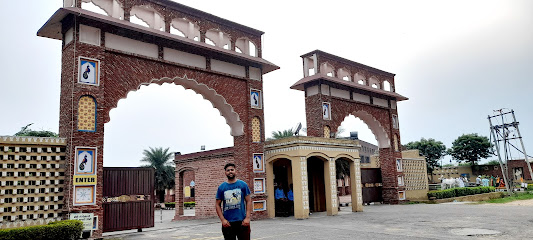
Gobindgarh Fort
Discover the rich history and stunning architecture of Gobindgarh Fort, a must-visit historical landmark in Amritsar, Punjab, showcasing India's cultural heritage.
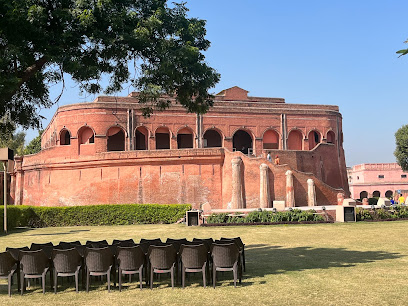
Shri Durgiana Temple, Amritsar
Discover the serene beauty and cultural richness of Shri Durgiana Temple in Amritsar, a spiritual haven adorned with stunning architecture and vibrant traditions.

Punjab State War Heros' Memorial & Museum
Explore the rich military history and honor the heroes at the Punjab State War Heroes' Memorial & Museum in Amritsar.
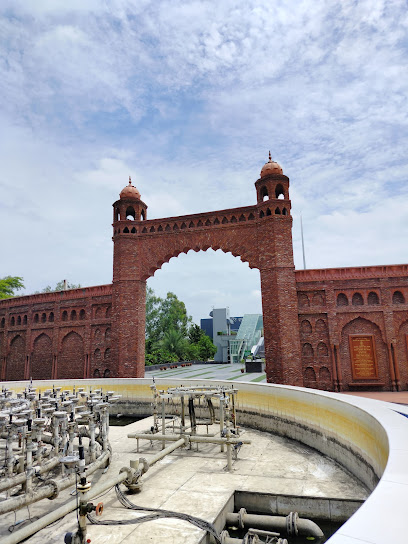
Hop on Hop Off Bus Tour (Open Top Double Decker Bus Tour) - Amritsar District, Punjab, India
Experience the beauty and culture of Amritsar with the Hop on Hop Off Bus Tour, your gateway to iconic landmarks and local treasures.
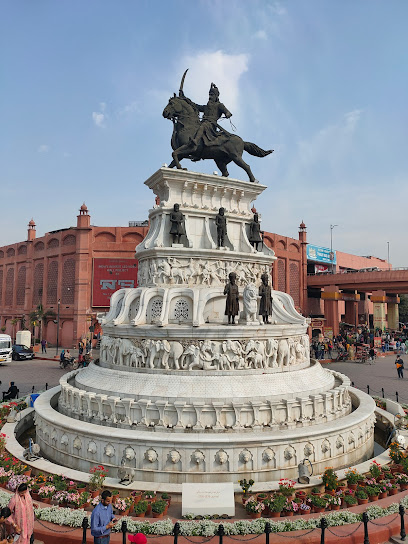
Mata Lal Devi Mandir
Discover the spiritual beauty of Mata Lal Devi Mandir in Amritsar, a stunning Hindu temple offering a blend of devotion, culture, and vibrant festivities.
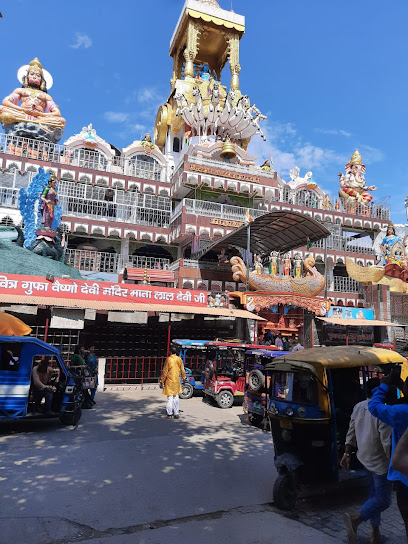
Martyrs Well
Explore the poignant history of Martyrs Well in Amritsar, a memorial dedicated to the heroes of India's struggle for freedom, surrounded by serene gardens.
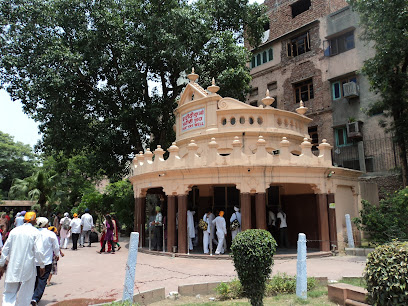
All India Famous Amritsari Kulcha
Discover the authentic taste of Amritsari Kulcha in Amritsar, where Punjabi flavors come alive in a cozy vegetarian restaurant.
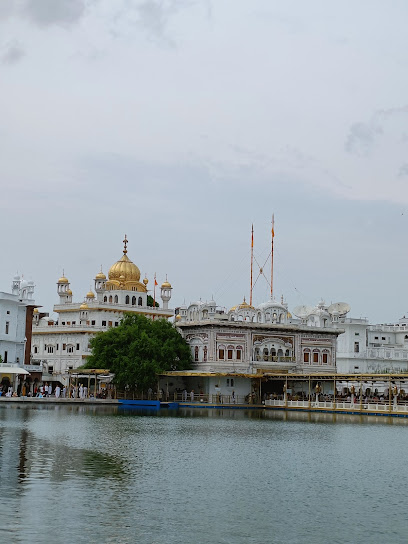
Golden Gate (Sri Amritsar City Gateway)
Discover the allure of the Golden Gate in Amritsar, a historical landmark embodying rich Sikh heritage and stunning architectural beauty.
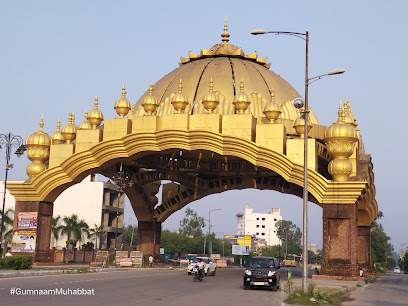
Akal Takht Sahib
Explore the spiritual heart of Sikhism at Akal Takht Sahib in Amritsar, where history, culture, and community converge in a breathtaking setting.
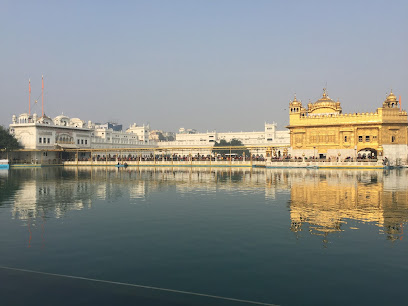
Amritsar Heritage Walk & Golden Temple Tour
Discover the rich heritage and spiritual essence of Amritsar through the Heritage Walk and Golden Temple Tour, a journey infused with culture and history.
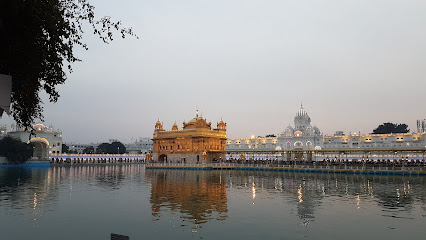
Gol Bagh
Explore the lush landscapes and tranquil environment of Gol Bagh, Amritsar's cherished urban park, perfect for relaxation and family gatherings.
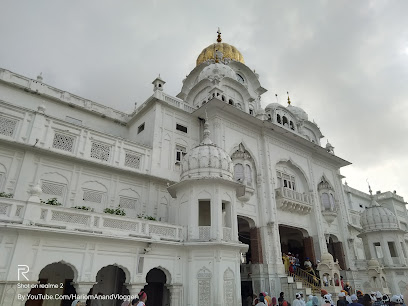
Statue of Maharaja Ranjit Singh
Explore the Statue of Maharaja Ranjit Singh in Amritsar, a stunning sculpture celebrating the legacy of Punjab's revered leader amidst serene gardens.
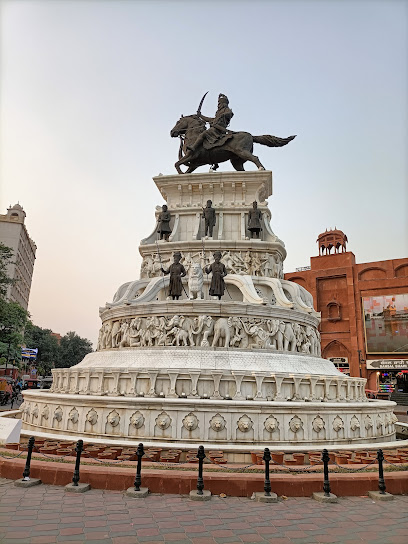
Unmissable attractions to see
Sri Harmandir Sahib
Explore the spiritual heart of Amritsar at Sri Harmandir Sahib, the Golden Temple, a symbol of peace, hospitality, and Sikh heritage.
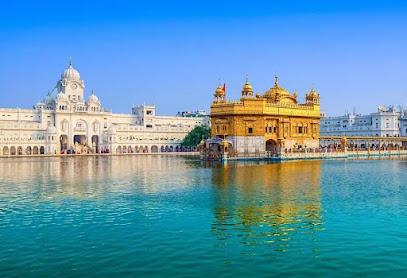
Attari - Wagah Border
Experience the vibrant flag-lowering ceremony at the Attari-Wagah Border, a unique blend of patriotism and cultural heritage between India and Pakistan.
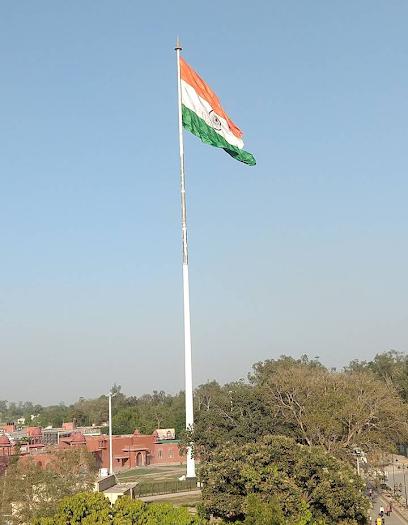
The Partition Museum
Explore the poignant history of the Partition of India at The Partition Museum in Amritsar, a must-visit for history enthusiasts and curious travelers.
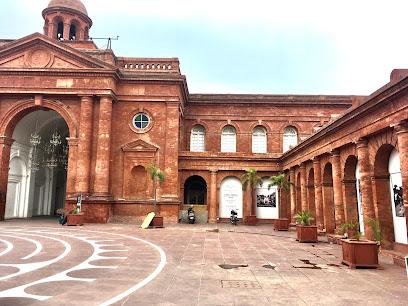
Sadda Pind Amritsar
Experience the rich culture of Punjab at Sadda Pind Amritsar, where tradition comes alive through authentic cuisine, art, and dance.

Gobindgarh Fort
Explore the rich history and cultural heritage of Punjab at Gobindgarh Fort, a majestic fortress in Amritsar that captivates every visitor.

Army Museum Lahore
Explore the captivating history of Pakistan's military heritage at the Army Museum Lahore, a must-visit for every history enthusiast.
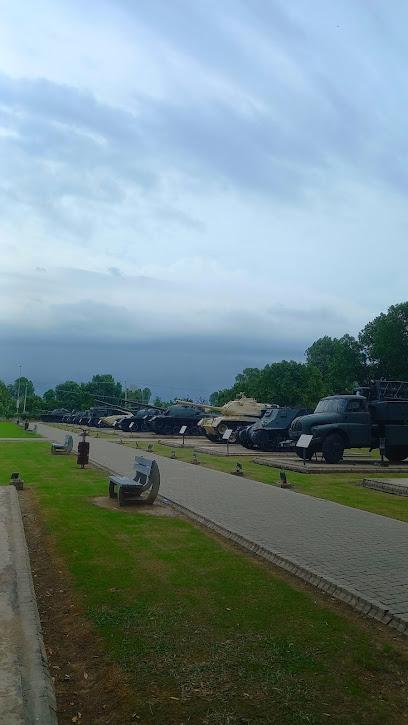
Punjab State War Heros' Memorial & Museum
Explore the rich military heritage of Punjab at the War Heroes' Memorial & Museum in Amritsar, where history and valor come alive.
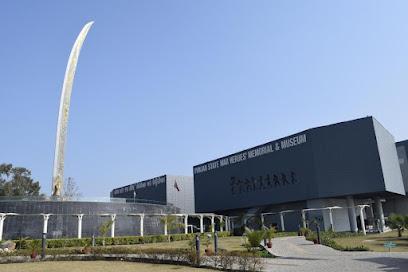
Hop on Hop Off Bus Tour (Open Top Double Decker Bus Tour) - Amritsar District, Punjab, India
Discover the rich heritage and vibrant culture of Amritsar with the convenient Hop on Hop Off Bus Tour, offering stunning views and flexible exploration.
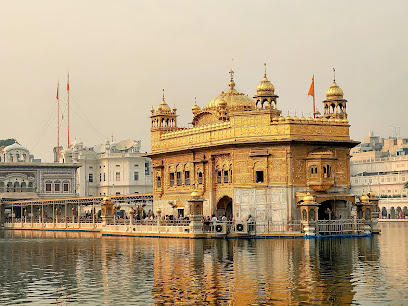
Mata Lal Devi Mandir
Explore the serene Mata Lal Devi Mandir in Amritsar, a captivating Hindu temple renowned for its stunning architecture and spiritual ambiance.
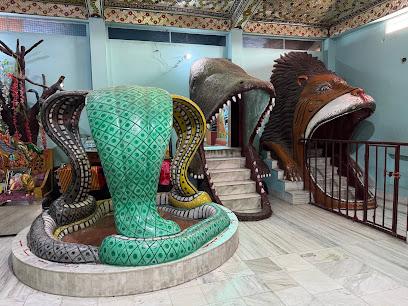
Martyrs Well
Discover the poignant history of Martyrs Well, a serene site in Jallianwala Bagh, where the legacy of India's freedom struggle lives on.
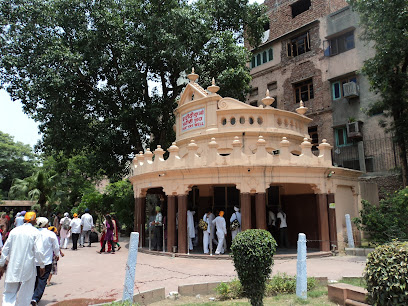
Sri Akal Takht Sahib
Discover the spiritual heart of Amritsar at Sri Akal Takht Sahib, a stunning Sikh temple embodying peace, history, and community.
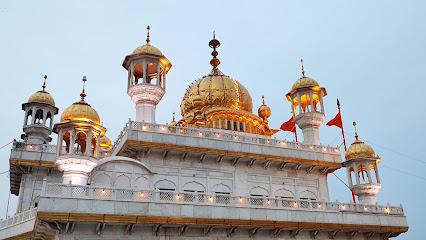
Gol Bagh
Experience tranquility at Gol Bagh, a serene park in Amritsar perfect for relaxation, picnics, and leisurely strolls amidst lush greenery.
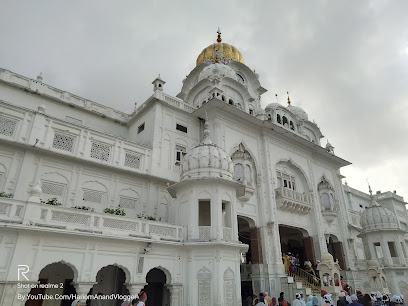
Rainbow Resort
Explore endless fun at Rainbow Resort, Amritsar's premier destination for adventure sports, family entertainment, and delightful dining experiences.

Jallianwala Bagh Museum
Discover the haunting history of Jallianwala Bagh Museum, a powerful symbol of India's fight for freedom, located in the vibrant city of Amritsar.

Funland
Experience the thrill of Funland Amusement Park in Amritsar, where adventure awaits in every corner, perfect for families and thrill-seekers alike!
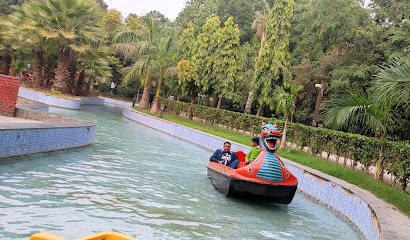
Essential places to dine
Kesar Da Dhaba
Experience the authentic taste of Punjab at Kesar Da Dhaba - a must-visit destination for food lovers in Amritsar.
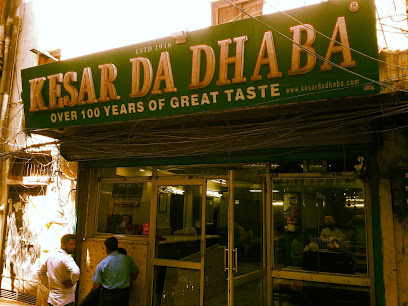
Bharawan Da Dhaba Amritsar
Discover authentic Punjabi vegetarian cuisine at Bharawan Da Dhaba in Amritsar – where every meal is a celebration of flavor and tradition.
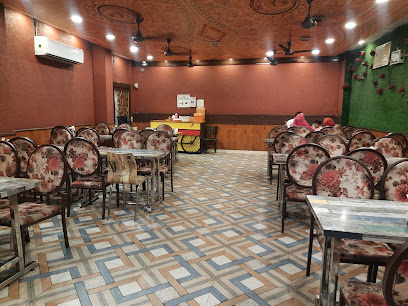
Makhan Fish and Chicken Corner Amritsar SINCE 1962
Experience authentic Punjabi flavors at Makhan Fish and Chicken Corner in Amritsar – where tradition meets taste since 1962.

Bade Bhai Ka Brothers Dhaba
Experience authentic Punjabi flavors at Bade Bhai Ka Brothers Dhaba in Amritsar – a must-visit culinary destination for food lovers.
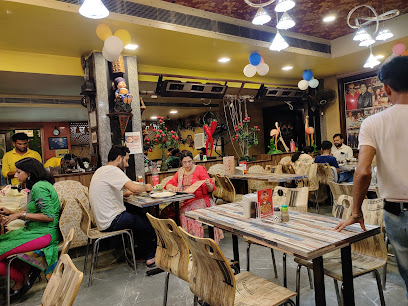
Bhai Kulwant Singh Kulchian Wale
Experience authentic Punjabi vegetarian cuisine at Bhai Kulwant Singh Kulchian Wale near the Golden Temple - a culinary gem in Amritsar.
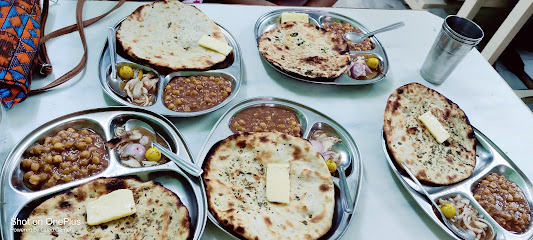
Hangries Amritsar | Italian & Chinese Restaurant
Discover the perfect blend of Italian and Chinese cuisine at Hangries Amritsar - where every bite is a delightful adventure.
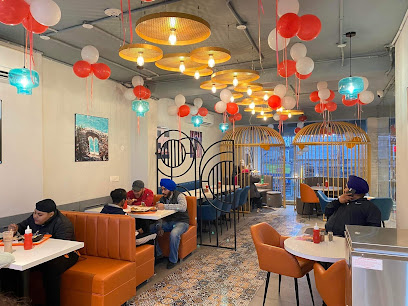
Crystal Restaurant
Experience authentic Punjabi cuisine at Crystal Restaurant in Amritsar – where tradition meets flavor in every bite.
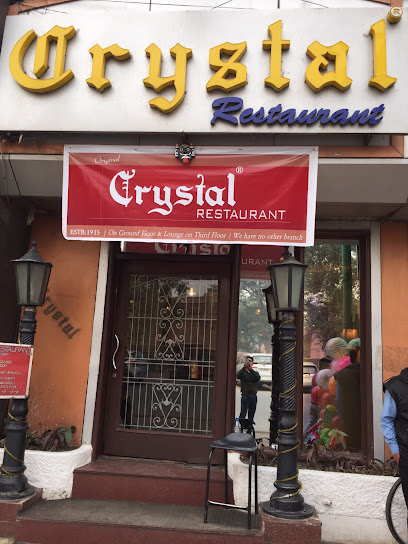
Giani Tea Stall
Experience authentic Indian flavors at Giani Tea Stall, where every cup tells a story and every bite delights.
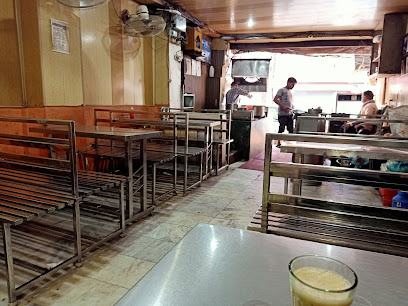
Sanjha Chulha
Discover authentic North Indian flavors at Sanjha Chulha in Amritsar - perfect for families and food lovers alike.
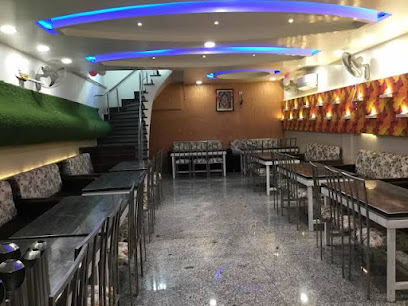
Brothers Dhaba
Discover authentic Punjabi cuisine at Brothers Dhaba in Amritsar – where flavor meets tradition in a vibrant setting.
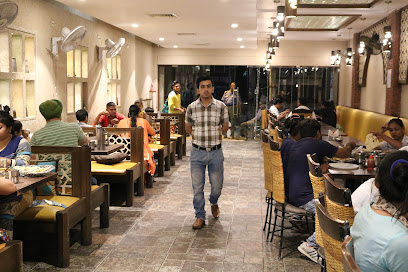
Beera Chicken House
Experience the authentic taste of India at Beera Chicken House – a paradise for chicken lovers in Amritsar.
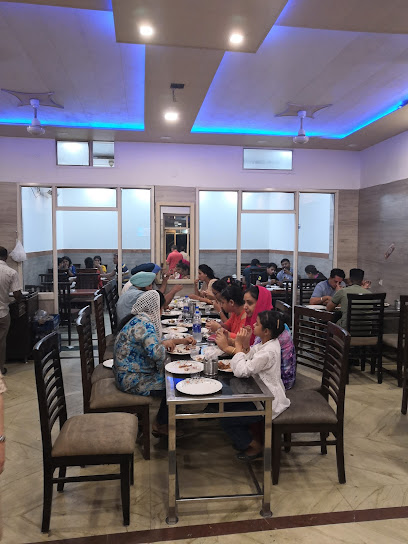
Barbeque Nation
Experience the ultimate barbecue buffet at Barbeque Nation in Amritsar - a culinary journey through flavors and aromas.
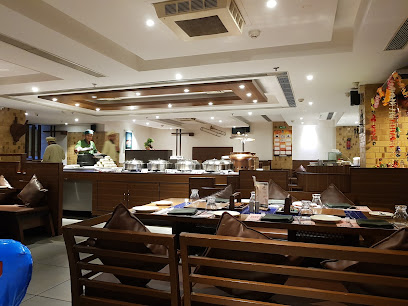
Charming Chicken
Savor mouthwatering chicken dishes at Charming Chicken in Amritsar - where flavor meets fast food in a delightful setting.
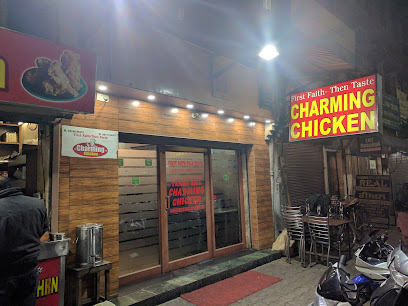
Bharawan Da Dhaba
Discover Bharawan Da Dhaba - A Culinary Gem Offering Authentic Vegetarian Punjabi Cuisine in Amritsar.
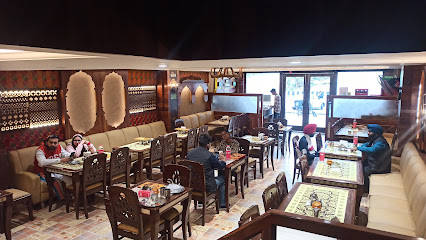
The Yellow Chilli
Experience the exquisite fusion of North Indian and Chinese cuisine at The Yellow Chilli in Amritsar's vibrant dining scene.
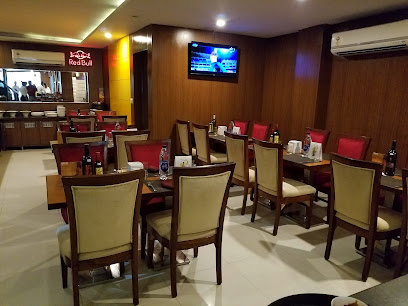
Markets, malls and hidden boutiques
VR Ambarsar
Discover the ultimate shopping experience at VR Ambarsar, where modern retail meets local culture in the heart of Amritsar.
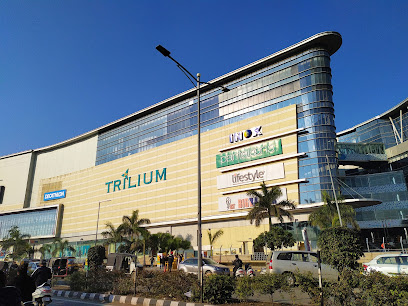
The Celebration Mall
Discover the ultimate shopping experience at The Celebration Mall in Amritsar, blending retail therapy with entertainment and dining options.
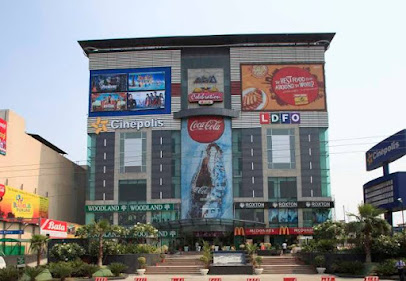
Simran Coconut Center
Explore Simran Coconut Center, Amritsar's vibrant shopping mall blending local crafts, international brands, and delightful dining options.
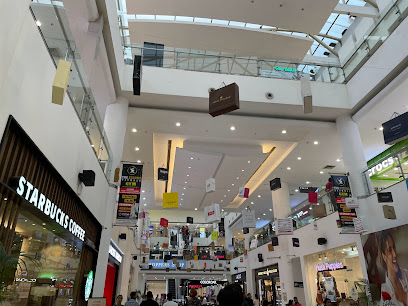
cloth market
Explore Amritsar's Cloth Market: A vibrant hub of culture, color, and textiles that showcases the best of Punjabi fashion.

Satguru's Sukh Myntra | Best phulkari Suit Dupatta shop In Amritsar |
Discover the beauty of traditional Phulkari suit dupattas at Satguru's Sukh Myntra, Amritsar's premier clothing store for vibrant Punjabi craftsmanship.
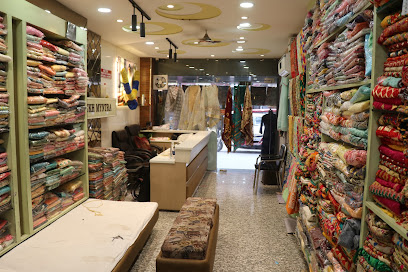
Lifestyle Stores
Experience a shopper's haven at Lifestyle Stores, Amritsar, with a variety of clothing, accessories, and unique gifts for every taste.

Celebrity Boutique
Explore Celebrity Boutique in Amritsar for unique fashion finds, personalized service, and a blend of traditional and contemporary styles.
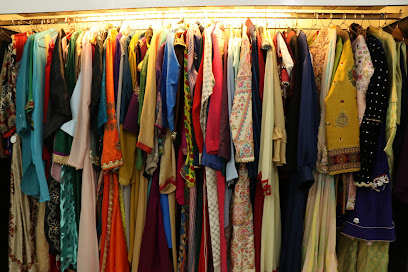
Kapsons Amritsar
Explore the latest fashion trends at Kapsons Amritsar, your ultimate clothing destination for casual and formal wear in the heart of Punjab.

kashmir art emporium
Discover exquisite designer clothing at Kashmir Art Emporium, Amritsar's premier destination for women's fashion and traditional elegance.
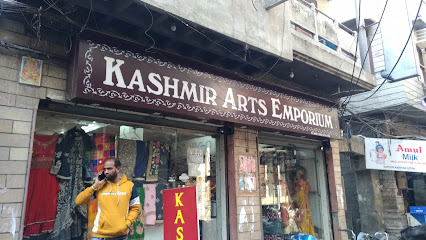
Khalchian Wale Di Hatti-Phulkari suits-Phulkari dupattas-Fancy dupattas
Discover the vibrant world of Phulkari at Khalchian Wale Di Hatti in Amritsar, where tradition meets style in stunning suits and dupattas.
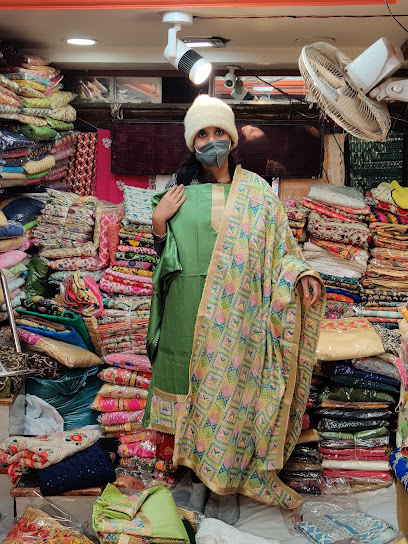
The Amritsar Store
Explore the essence of Punjab at The Amritsar Store, where tradition meets vibrant local craftsmanship in an unforgettable shopping experience.

Raja Exclusive | Phulkari in Amritsar Phulkari suit in Amritsar Phulkari Dupatta in Amritsar |
Explore the vibrant world of Phulkari at Raja Exclusive, where traditional Punjabi craftsmanship meets modern fashion in Amritsar.
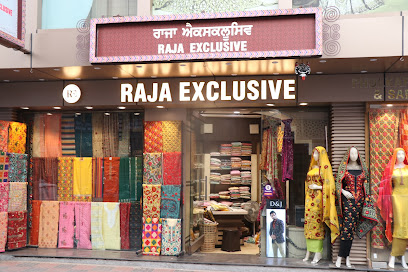
Fabindia Experience Center, Mall Road
Explore Fabindia Experience Center on Mall Road for exquisite handcrafted clothing and unique home décor, embodying India's rich traditions.
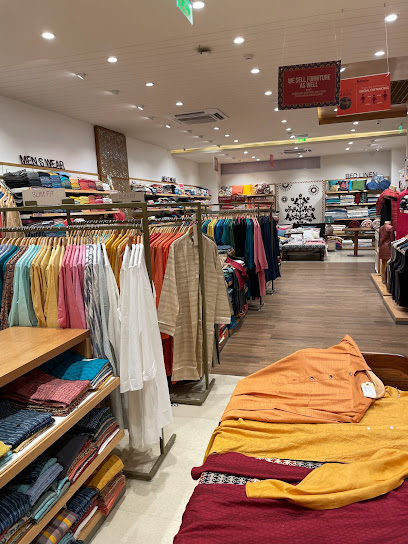
Ruaab Punjabi Jutti Amritsar
Discover the charm of traditional Punjabi footwear at Ruaab Punjabi Jutti in Amritsar, where quality meets culture.
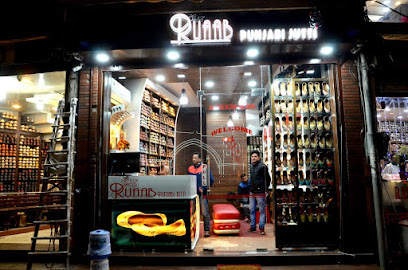
Archies - Archies Galleries in Amritsar
Explore Archies Galleries in Amritsar for unique gifts, vibrant cards, and delightful souvenirs that celebrate Indian culture and craftsmanship.

Essential bars & hidden hideouts
Peddlers
Discover the bustling nightlife at Peddlers, Amritsar's favorite pub offering delicious food, refreshing drinks, and an unforgettable atmosphere.

Hoppers
Experience the vibrant culinary scene of Amritsar at Hoppers, a charming pub offering a delightful mix of local and international flavors.
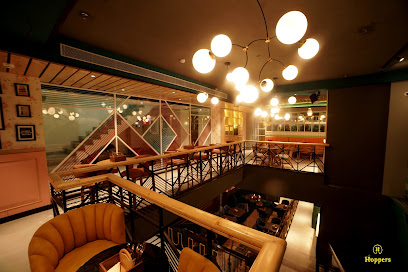
Irish Beach
Experience the best of Amritsar's culinary and nightlife scene at Irish Beach, a grill restaurant offering vibrant dining and entertainment.
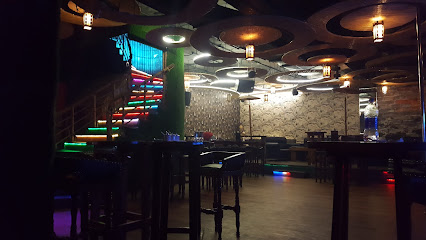
Papa Whiskey Amritsar
Discover the lively brewpub scene at Papa Whiskey Amritsar, where local flavors meet a vibrant nightlife.
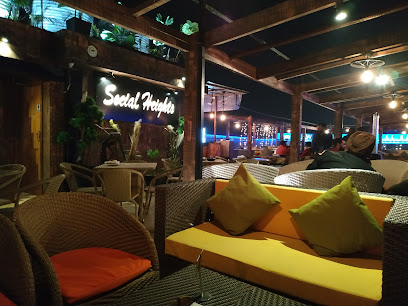
Egyptian Brewery | Best bar & Pub In Ranjit avenue Amritsar- Restro Bar in amritsar- best Night Club in Amritsar
Discover the energetic nightlife at Egyptian Brewery, Amritsar's premier bar and pub offering a mix of exquisite drinks and delicious cuisine.
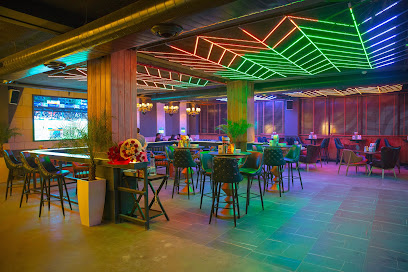
The Beer Café
Experience the best of grills, beers, and global cuisines at The Beer Café in Amritsar, a top destination for food lovers and social gatherings.
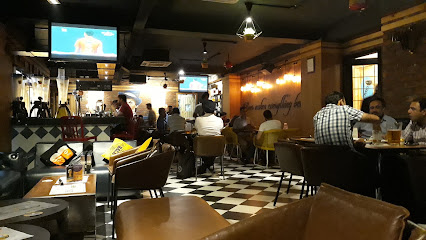
The Liquid Room- Best Pub, Club/Bar In Amritsar
Discover Amritsar's vibrant nightlife at The Liquid Room, where music, dance, and culinary delights come together for an unforgettable experience.
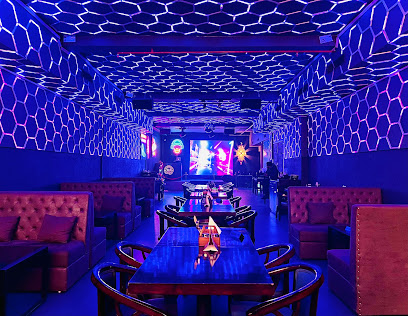
Rebels Restro & Bar (By Meltdown)
Experience a culinary delight at Rebels Restro & Bar, where delicious grilled dishes and vibrant drinks meet a cozy atmosphere in Amritsar.
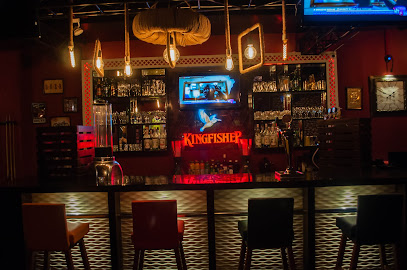
BAR XCHANGE
Discover BAR XCHANGE in Amritsar: A dynamic pub experience with fluctuating drink prices and an exciting menu that keeps you coming back for more.
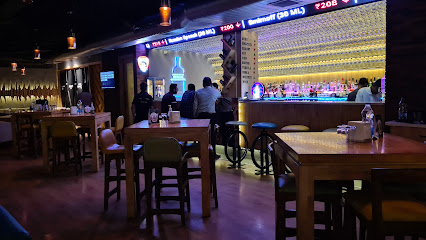
european knight
Experience the vibrant flavors of Europe at European Knight, a top dining and bar destination in Amritsar.
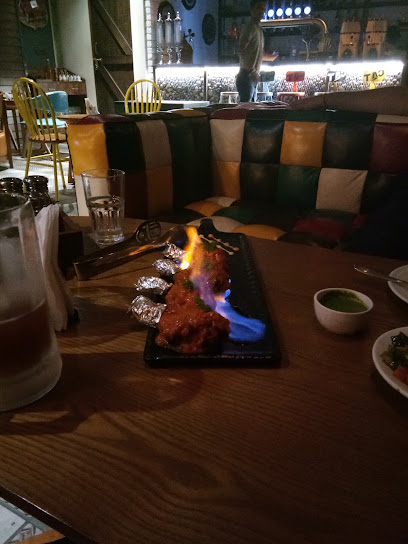
Texas Bar & Grill
Experience the best of American cuisine at Texas Bar & Grill in Amritsar, where flavors and fun meet in a vibrant setting.
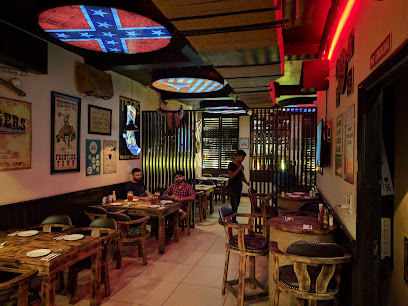
Hooters Indian Restro Bar | Best Family Restaurant In Amritsar | Best Café in Amritsar | Best Restaurant in Amritsar
Discover the perfect blend of Indian cuisine and vibrant dining at Hooters Indian Restro Bar in Amritsar, ideal for families and food lovers alike.
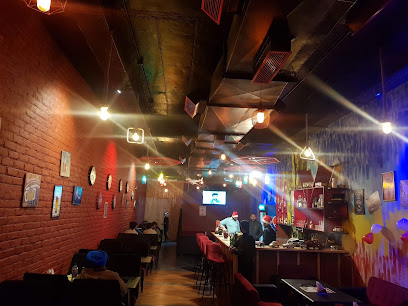
Pyramid Amritsar | Café | Lounge | Bar | Best Nightclub
Discover the vibrant nightlife of Pyramid Amritsar, a stylish lounge and bar offering delightful cuisine and refreshing drinks in an energetic atmosphere.
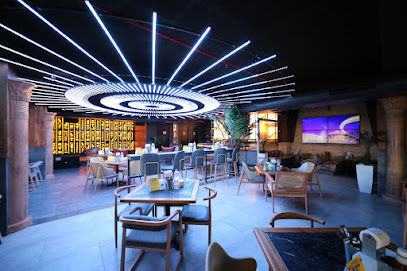
Lawrence Restobar
Experience the vibrant ambiance and delectable cuisine at Lawrence Restobar, a must-visit bar and restaurant in Amritsar.

Devils Night Amritsar
Experience the vibrant culinary scene at Devils Night Amritsar, where Indian, Chinese, and Italian flavors come together in a lively pub atmosphere.
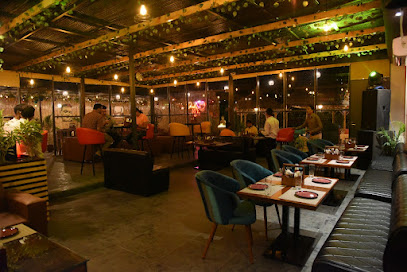
Local Phrases
-
- Helloਸਤ ਸ੍ਰੀ ਅਕਾਲ
[Sat Sri Akal] - Goodbyeਖੁਦਾ ਹਾਫ਼ਿਜ਼
[Khuda Hafiz] - Yesਹਾਂ
[Haan] - Noਨਹੀਂ
[Nahi] - Please/You're welcomeਕਿਰਪਾ ਕਰਕੇ
[Kirpa Karke] - Thank youਧੰਨਵਾਦ
[Dhannvaad] - Excuse me/Sorryਮਾਫ ਕਰੋ
[Maaf Karo] - How are you?ਤੁਸੀਂ ਕਿਵੇਂ ਹੋ?
[Tusi kiven ho?] - Fine. And you?ਠੀਕ ਹਾਂ। ਤੁਸੀਂ?
[Theek haan. Tusi?] - Do you speak English?ਕੀ ਤੁਸੀਂ ਅੰਗਰੇਜ਼ੀ ਬੋਲਦੇ ਹੋ?
[Ki tusi angrezi bolde ho?] - I don't understandਮੈਂ ਸਮਝਦਾ ਨਹੀਂ
[Main samajhda nahi]
- Helloਸਤ ਸ੍ਰੀ ਅਕਾਲ
-
- I'd like to see the menu, pleaseਕਿਰਪਾ ਕਰਕੇ ਮੈਨੂੰ ਮੀਨੂ ਵੇਖਣ ਦਿਓ
[Kirpa Karke mainu menu vekhan dio] - I don't eat meatਮੈਂ ਮੀਟ ਨਹੀਂ ਖਾਂਦਾ
[Main meat nahi khaanda] - Cheers!ਚੀਅਰਸ!
[Cheers!] - I would like to pay, pleaseਕਿਰਪਾ ਕਰਕੇ ਮੈਂ ਦੇਣਾ ਚਾਹੁੰਦਾ ਹਾਂ
[Kirpa Karke main dena chahunda haan]
- I'd like to see the menu, pleaseਕਿਰਪਾ ਕਰਕੇ ਮੈਨੂੰ ਮੀਨੂ ਵੇਖਣ ਦਿਓ
-
- Help!ਮਦਦ!
[Madd] - Go away!ਚਲੇ ਜਾਓ!
[Chale jao] - Call the Police!ਪੁਲਿਸ ਨੂੰ ਬੁਲਾਓ!
[Police nu bulao] - Call a doctor!ਡਾਕਟਰ ਨੂੰ ਬੁਲਾਓ!
[Doctor nu bulao] - I'm lostਮੈਂ ਹਾਰ ਗਿਆ ਹਾਂ
[Main haar giya haan] - I'm illਮੈਂ ਬੀਮਾਰ ਹਾਂ
[Main beemar haan]
- Help!ਮਦਦ!
-
- I'd like to buy...ਮੈਂ ... ਖਰੀਦਣਾ ਚਾਹੁੰਦਾ ਹਾਂ
[Main ... khareedna chahunda haan] - I'm just lookingਮੈਂ ਬਸ ਦੇਖ ਰਿਹਾ ਹਾਂ
[Main bas dekh riha haan] - How much is it?ਇਸ ਦਾ ਕੀਮਤ ਕਿੰਨੀ ਹੈ?
[Is da keemat kinni hai?] - That's too expensiveਇਹ ਬਹੁਤ ਮਹੰਗਾ ਹੈ
[Eh bahut mahanga hai] - Can you lower the price?ਕੀ ਤੁਸੀਂ ਕੀਮਤ ਘਟਾ ਸਕਦੇ ਹੋ?
[Ki tusi keemat ghatta sakde ho?]
- I'd like to buy...ਮੈਂ ... ਖਰੀਦਣਾ ਚਾਹੁੰਦਾ ਹਾਂ
-
- What time is it?ਕਿੰਨਾ ਵਾਰ ਹੈ?
[Kinna vaar hai?] - It's one o'clockਇਸ ਦਾ ਇੱਕ ਵਾਰ ਹੈ
[Is da ik vaar hai] - Half past (10)10 ਵਜੇ ਦਾ ਅੱਧਾ
[Das vaje da adha] - Morningਸਵੇਰ
[Saver] - Afternoonਦੁਪਹਿਰ
[Dopahar] - Eveningਸ਼ਾਮ
[Shaam] - Yesterdayਕੱਲ
[Kal] - Todayਅੱਜ
[Aj] - Tomorrowਕੱਲ
[Kal] - 1ਇੱਕ
[Ik] - 2ਦੋ
[Do] - 3ਤਿੰਨ
[Tinn] - 4ਚਾਰ
[Char] - 5ਪੰਜ
[Punj] - 6ਛੇ
[Chhe] - 7ਸੱਤ
[Sat] - 8ਅੱਠ
[Ath] - 9ਨੌ
[Nau] - 10ਦਸ
[Das]
- What time is it?ਕਿੰਨਾ ਵਾਰ ਹੈ?
-
- Where's a/the...?ਇਥੇ ... ਕਿੱਥੇ ਹੈ?
[Ithe ... kithe hai?] - What's the address?ਪਤਾ ਕਿਵੇਂ ਹੈ?
[Pata kiven hai?] - Can you show me (on the map)?ਕੀ ਤੁਸੀਂ ਮੈਨੂੰ (ਨਕਸ਼ੇ ਉੱਤੇ) ਦਿਖਾ ਸਕਦੇ ਹੋ?
[Ki tusi mainu (naksha utte) dikha sakde ho?] - When's the next (bus)?ਅਗਲਾ (ਬੱਸ) ਕਿਸ ਵੇਲੇ ਹੈ?
[Agla (bus) kis velle hai?] - A ticket (to ....)ਇੱਕ ਟਿਕਟ (... ਲਈ)
[Ik ticket (... layi)]
- Where's a/the...?ਇਥੇ ... ਕਿੱਥੇ ਹੈ?
History of Amritsar
-
Amritsar, a city in the northwestern Indian state of Punjab, was founded in 1577 by the fourth Sikh Guru, Guru Ram Das. The city’s name, meaning 'Pool of Nectar,' derives from the sacred pool around the Golden Temple. This city quickly became the center of Sikhism and a vital cultural and religious hub.
-
The Harmandir Sahib, commonly known as the Golden Temple, was completed in 1604 under the direction of Guru Arjan, the fifth Sikh Guru. The temple stands as a symbol of unity, equality, and spirituality, drawing pilgrims from across the globe. Its architecture integrates Islamic and Hindu artistic styles, reflecting a unique blend of cultures.
-
On April 13, 1919, during the British colonial rule, a tragic event unfolded at Jallianwala Bagh in Amritsar. British troops, under the command of General Dyer, opened fire on a peaceful gathering, killing hundreds of unarmed Indians. This massacre marked a pivotal moment in India's struggle for independence, igniting widespread outrage and resistance against British rule.
-
The partition of India in 1947 led to significant upheaval in Amritsar, which lies near the newly drawn India-Pakistan border. The city experienced massive population shifts, communal violence, and refugee crises. Despite these challenges, Amritsar emerged resilient, continuing to thrive as a vibrant center of culture and commerce.
-
In June 1984, the Indian Army launched Operation Blue Star to remove Sikh militants from the Golden Temple complex. The operation resulted in extensive damage to the sacred site and significant loss of life, leaving a lasting impact on the Sikh community and Indian politics. The event remains a deeply sensitive and significant chapter in Amritsar's history.
-
Amritsar is renowned for its vibrant cultural festivals, including Vaisakhi, which marks the Sikh New Year and the harvest season. The city also celebrates Diwali, Guru Nanak Jayanti, and other significant religious events with great fervor. These festivals reflect the rich cultural tapestry and spiritual heritage of Amritsar.
-
The culinary landscape of Amritsar is a delectable blend of traditional Punjabi flavors. The city is famous for its street food, including Amritsari Kulcha, Chole, Lassi, and a variety of sweets. The local cuisine, deeply rooted in the region's agricultural practices and cultural traditions, offers a gastronomic journey for visitors.
-
Post-independence, Amritsar has seen significant economic growth and modernization. The city is a prominent trade and tourism hub, thanks to its strategic location and rich historical legacy. Various industries, including textiles, handicrafts, and information technology, contribute to its economic landscape, making it a dynamic urban center.
-
Amritsar is home to numerous educational and cultural institutions, such as Guru Nanak Dev University and Khalsa College. These institutions play a crucial role in preserving and promoting the cultural and intellectual heritage of the region. They serve as centers for learning, research, and cultural exchange, contributing to the city's vibrant academic and cultural life.
Amritsar Essentials
-
Amritsar is well-connected by air, rail, and road. The Sri Guru Ram Dass Jee International Airport is approximately 11 kilometers from the city center and has direct flights from major cities in India and abroad. Amritsar Junction railway station is a major hub with trains connecting it to cities like Delhi, Mumbai, Kolkata, and others. Buses operated by Punjab Roadways and private operators also connect Amritsar with neighboring states and cities. Taxis and car rentals are available for a more comfortable journey.
-
Within Amritsar, transportation options include auto-rickshaws, cycle-rickshaws, and taxis. The local bus service is economical and connects major parts of the city. For a more authentic experience, consider hiring a bicycle rickshaw for short distances. Ride-hailing apps like Uber and Ola are also operational in the city. Renting a scooter or bicycle is another option for those who prefer exploring at their own pace.
-
The official currency in Amritsar is the Indian Rupee (INR). Credit and debit cards are widely accepted in hotels, restaurants, and larger shops. However, it is advisable to carry some cash for smaller establishments and street vendors. ATMs are abundant throughout the city, but ensure you have enough cash, especially when visiting rural areas or smaller attractions.
-
Amritsar is generally safe for tourists, but standard precautions should be observed. Avoid walking alone late at night and be cautious of your belongings in crowded areas like markets and the Golden Temple complex. Areas around the railway station and bus terminals can be prone to petty crime. Always use registered taxis or ride-hailing services to ensure safety.
-
In case of emergency, dial 100 for police assistance, 101 for fire, and 102 for medical emergencies. The nearest hospital is Guru Nanak Dev Hospital, located in the city center. Pharmacies are widely available for minor health issues. It is advisable to have travel insurance that covers medical emergencies. Keep a list of local contacts and the address of your accommodation handy.
-
Fashion: Do dress modestly, especially when visiting religious sites. Avoid wearing revealing clothing. Religion: Do respect local customs and remove your shoes before entering religious places like the Golden Temple. Cover your head with a scarf or handkerchief. Public Transport: Do be courteous and offer your seat to elderly passengers. Avoid eating or drinking on public transport. Greetings: Do greet people with a 'Namaste' or a handshake. A slight bow of the head shows respect. Eating & Drinking: Do try local Punjabi delicacies and accept food offerings graciously. Don't refuse hospitality, as it is considered impolite.
-
To experience Amritsar like a local, visit the bustling markets of Hall Bazaar and Katra Jaimal Singh for traditional Punjabi goods. Engage with locals, who are often friendly and willing to share stories about the city's history and culture. Don't miss the evening Wagah Border ceremony for a unique experience. For authentic Punjabi cuisine, try the local dhabas (roadside eateries). Visit the Golden Temple early in the morning to avoid crowds and experience the serene atmosphere.
Trending Landmark in Amritsar
-
Sri Harmandir Sahib
-
The Partition Museum - Amritsar District, Punjab, India
-
Sadda Pind Amritsar
-
Gobindgarh Fort
-
Shri Durgiana Temple, Amritsar
-
Punjab State War Heros' Memorial & Museum
-
Hop on Hop Off Bus Tour (Open Top Double Decker Bus Tour) - Amritsar District, Punjab, India
-
Mata Lal Devi Mandir
-
Martyrs Well
-
All India Famous Amritsari Kulcha
-
Golden Gate (Sri Amritsar City Gateway)
-
Akal Takht Sahib
-
Amritsar Heritage Walk & Golden Temple Tour
-
Gol Bagh
-
Statue of Maharaja Ranjit Singh
Nearby Cities to Amritsar
-
Things To Do in Lahore
-
Things To Do in Gujranwala
-
Things To Do in Sialkot
-
Things To Do in Jammu
-
Things To Do in Faisalabad
-
Things To Do in Shimla
-
Things To Do in Manali
-
Things To Do in Rawalpindi
-
Things To Do in Islamabad
-
Things To Do in Murree
-
Things To Do in Abbottabad
-
Things To Do in Multan
-
Things To Do in Rishikesh
-
Things To Do in Kaghan
-
Things To Do in Leh














